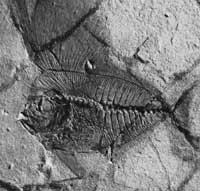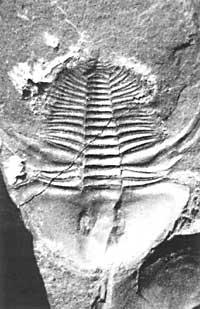After dying, fossilize at least!
1999/06/01 Elhuyar Zientzia Iturria: Elhuyar aldizkaria
Paleontology is, by definition, the investigation of the life of the past and leaves in the hands of neontology the study of the current life. But the present is merely a demand and becomes a past. Therefore, we could simply say that this is a study of living paleontology. Moreover, life is almost a demand, since death is immediate. He therefore deals with living paleontology and death.
Medicine helps to make death happen as late as possible and transplants are one of the ways it uses, the Frankensteinate process. At the end of this millennium I have heard that within a few centuries medicine could reach a future without death. This can be achieved in part through the Frankensteinate process, yes, no one explains who will be the donors of organs and limbs that will be needed, since xenotransplants and artificial substitutes will not be enough! Despite the advances, doctors and paleontologists know perfectly well that death is inevitable...
However, previous efforts have been made so that the body can last forever. Thus, among other things, the Egyptian authorities attempted through mummification. Unfortunately, even the most advanced technology could not resurrect these mummies. They are already semi-fossilized. On the other hand, although long ago nothing is heard, XX. In the 20th century, modern mummification, crionization, has also taken place, especially in the United States of America. Thus, dead "important" characters, such as Disney and Kennedy, have frozen and kept waiting for a day when technology will be invented to find remedy for the problems that led them to die.
But mummification and crionization are very expensive and ensure nothing. Perhaps it is better to pass it to History by doing something "big". For this, some do great works. There are the Egyptian pyramids, the Chinese wall, the El Escorial palace, the Eiffel Tower, the Guggenheim Museum Bilbao and the Kurtsaal Berria palace, among many others. Most, on the contrary, have a simple sepulchre made in the dolmen, stele or cemetery with Cretaceous limestones. In the same line, others want to see his name as an author in most books, articles, works of art... or in the Guinness book with a record.

However, most of us hope for a genetic duration. Through genes we assign permanence in our children. This seems unsuccessful. It has been seen through a series of studies conducted in France with names and surnames. More than 70% of the lineages that lived in the early 20th century have been destroyed. It seems that only some species of calls are successful; the example of the surname Martínez would demonstrate the latter in Spain. For some the genetic duration is not enough, so in recent times cloning can help them. But as Arturo Elosegi(1) has well explained, this is not the real way, because it is a new being and not the duration of the original body.
Religions cannot guarantee the duration of the body and, at most, offer the soul or rebirth in a new body. Seeing that beetles are the most abundant species in the world, more than 300,000 species, I would say that most individuals never have to be beetles. Ask the Alaves if not. On the other hand, the Christian religion offers the survival of the soul and the resurrection of the body in Heaven, an ethereal and txuri-urdin place in which all day touches the harp and looks at God.
I also have concerns about life and death. On the one hand, I want to survive in this world as long as possible. I prefer to play the harp here and now, than in the next life. On the other hand, I know that I will ever die and that after I die I will last a while in the thought of my loved ones. But this does not seem enough to me. That is why I want to put in paleontology the hope of a long duration. Fossilization can give me a temporary duration. I have in my hands a trilobite of 500 million years ago. When the trilobitxo died, it collapsed and rolled into a pelotite. This pelotite was deposited by the sea and was covered by the mud before its dismantling by the necrophages. Harden the sludge, stack them and convert the hard rock, the permanent coffin. Finally, tectonics and erosion have pulled the pelotite out of the den. A small number of beings who lived in history follow the fate of trilobite. Most beings, however, do not have this kind of luck and after their death, the necrophages completely undo them. Fossilization is therefore the most suitable way for the survival of the body. It cannot guarantee its indefinite duration, as before or after fossils are also destroyed, as our own Ludia will disappear with the Solar System.
I do not want that after dying there is food of worms and bacteria in the cemetery, it is more ours that, as far as possible, becomes a group of acambios for the current Frankensteine, thus helping another. I think that what is useless is better to burn it and avoid the gastronomic phase of the bugs. But if possible I like to focus more than burn. It is difficult to know where deposits are currently forming in exceptional fossilization conditions. However, without being so thin, the deep sea can simply be the ideal place for fossilization, where there are probably no soft areas, but at least the bones can be fossilized. Apika, some individuals who have been thrown into the ocean sands are already fossilizing.
Well thought out, offering the dead fossilization as duration can not be a bad business idea. You can certainly create a profitable tafalla industry that offers geological cemeteries. Who says that in paleontology, apart from dinosaurs, there is no economic performance? To the parrot, the future will prove otherwise!

Gai honi buruzko eduki gehiago
Elhuyarrek garatutako teknologia





